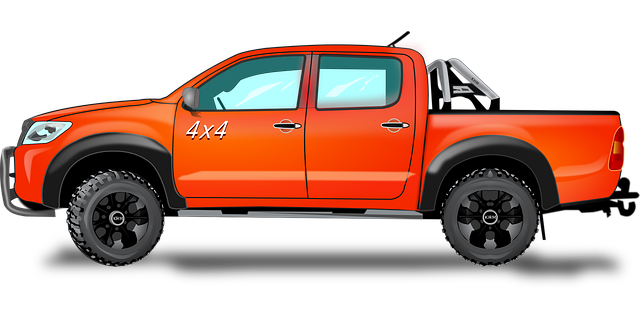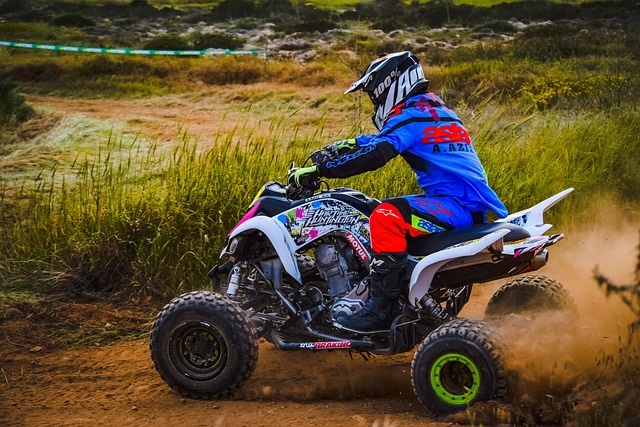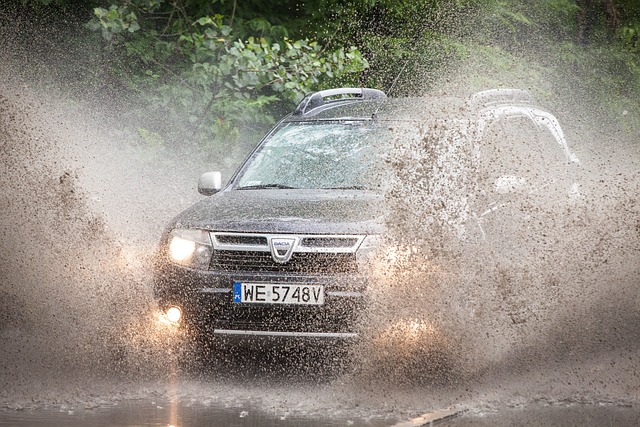Overland 4×4-Shop-RGV provides essential recovery lines for off-road vehicles, enabling safe extraction through force transfer. These high-strength cables or straps are crucial for navigating difficult terrains and come in various options like cable lines and flat webbing. The shop offers customization, installation, and maintenance services, ensuring optimal performance in diverse conditions. Regular care extends their lifespan, making them indispensable tools for both enthusiasts and professionals, as demonstrated by successful recovery stories.
In the realm of off-road adventures, getting stuck is just part of the journey. That’s where recovery lines—a crucial component for safe extraction—come into play. This article explores the world of recovery lines, delving into their understanding, installation, types, and maintenance. From the basics to real-world applications, we uncover the vital role of overland 4×4-shop-RGVs in ensuring smooth rescues. Discover how the right recovery line selection can enhance your vehicle’s capabilities, offering peace of mind for any terrain.
- Understanding Recovery Lines: A Basic Overview
- The Role of Overland 4×4-Shop-RGV in Recovery Line Installation
- Types of Recovery Lines and Their Applications
- Choosing the Right Recovery Line for Your Vehicle
- Maintenance and Care for Longevity of Recovery Lines
- Real-World Scenarios: Success Stories of Using Recovery Lines
Understanding Recovery Lines: A Basic Overview

Recovery lines, also known as tow ropes or winches, are essential tools for off-road enthusiasts and 4×4 owners. These robust pieces of equipment enable drivers to navigate challenging terrains and extricate their vehicles from difficult situations. At an overland 4×4-shop-rgv, you’ll find a wide array of recovery lines designed to withstand the rigors of outdoor adventures.
Understanding the basic mechanics behind recovery lines is crucial for safe and effective use. They typically consist of high-strength cables or straps with secure attachment points, allowing them to be connected between two vehicles. When faced with a stuck vehicle, these lines transfer pulling force, enabling the assistance vehicle to safely tow or winch the stranded one to safety. Proper maintenance and inspection are key, as these lines often endure extreme conditions, ensuring they remain in optimal condition for when off-road challenges arise.
The Role of Overland 4×4-Shop-RGV in Recovery Line Installation

Overland 4×4-Shop-RGV plays a pivotal role in recovery line installation, offering specialized services tailored for off-road enthusiasts and professionals alike. With their expertise, they ensure that every component is meticulously selected and fitted, enhancing the vehicle’s capability to navigate challenging terrains. The team at Overland 4×4-Shop-RGV is well-versed in the latest industry trends and technologies, enabling them to provide cutting-edge solutions for recovery lines, which are essential for safe and effective rescue operations.
They take pride in their ability to customize recovery systems to match the unique needs of each customer. Whether it’s a light-duty truck or a heavy-duty off-road vehicle, their shop is equipped to handle various makes and models. By integrating robust recovery lines, these experts empower drivers to tackle unexpected situations with confidence, ensuring peace of mind when venturing into uncharted territories.
Types of Recovery Lines and Their Applications

Recovery lines, also known as tow ropes or winch straps, come in various types designed for specific applications. For off-road enthusiasts and overland 4×4-shop-rwg customers, sturdy and reliable recovery lines are essential tools. One common type is the standard cable line, which features a robust metal cable core wrapped with durable synthetic threads. These lines are versatile and suitable for most towing scenarios, offering excellent strength and resistance to stretching.
Another specialized option is the flat webbing recovery line, ideal for situations where a wider surface area of contact is needed. The flat design distributes weight evenly, making it perfect for delicate vehicle recoveries. Additionally, some recovery lines incorporate advanced features like built-in glow-in-the-dark strips, improving visibility during night operations, especially in challenging terrain. These diverse options cater to various needs, ensuring that overland adventurers and 4×4 enthusiasts are well-equipped for unexpected situations.
Choosing the Right Recovery Line for Your Vehicle

When selecting a recovery line for your vehicle, especially if you’re an enthusiast who enjoys off-road adventures, it’s crucial to consider the specific needs of your 4×4. Different terrains and driving conditions require diverse recovery equipment. For instance, an overland trip through rugged landscapes demands sturdy, high-tension lines that can withstand intense stress and harsh environments. The Overland 4×4-Shop-RGV offers a range of options tailored for such scenarios, ensuring you’re prepared for any eventuality.
Their inventory includes recovery lines designed specifically for 4×4 vehicles, engineered to provide exceptional strength and durability. Look for features like reinforced construction, UV resistance, and a wide working load capacity to match your vehicle’s capabilities. With the right recovery line, you’ll enhance your safety and confidence while navigating challenging trails, making your off-road experience more enjoyable and secure.
Maintenance and Care for Longevity of Recovery Lines

Regular maintenance and proper care are essential for ensuring the longevity of recovery lines, a vital component for any off-road enthusiast or overland 4×4-shop-rgv professionals. These robust lines, designed to withstand extreme conditions, require routine inspection to identify any signs of wear, tear, or damage. Over time, exposure to harsh elements can weaken the material, making it more susceptible to failure during critical recovery operations.
To maintain their effectiveness, recovery lines should be cleaned regularly to remove dirt, debris, and any built-up residues that could impair their performance. Proper storage is another crucial aspect; when not in use, these lines should be hung or coiled neatly, away from direct sunlight and extreme temperatures, to prevent damage and maintain their integrity. By implementing these simple yet effective care practices, off-road enthusiasts can maximize the lifespan of their recovery lines, ensuring they remain reliable when facing challenging terrain and situations.
Real-World Scenarios: Success Stories of Using Recovery Lines

In real-world scenarios, recovery lines have proven to be invaluable tools for off-road enthusiasts and professionals alike. Imagine a scenario where a 4×4 vehicle navigates challenging terrain during an overland expedition. The rugged landscape presents unexpected obstacles, causing the driver to get stuck in deep mud or on steep inclines. Here’s where recovery lines come into play. These robust lines are designed to be attached to winches and other pulling mechanisms, providing the necessary traction and support to extract the vehicle safely without causing further damage.
The success of using recovery lines is evident in numerous stories shared by avid off-roaders and even professional rescue teams. For instance, at the renowned overland 4×4 shop RGV (a fictional name), a customer shared their experience during a recent trip across the desert. Their vehicle encountered a sand dune that proved too steep to climb, and they found themselves stranded. With the help of recovery lines, a nearby rescue team was able to pull them out, ensuring the vehicle sustained no major damage. Such success stories underscore the importance of having recovery lines readily available for any unforeseen challenges on the road or off it.
Recovery lines are an essential tool for off-road enthusiasts and professionals alike, offering a reliable means of towing and recovery. As demonstrated by real-world success stories involving the expert installation and maintenance of these systems by overland 4×4-shops like RGV, choosing the right type and properly caring for your recovery lines can make all the difference in navigating challenging terrains. By understanding the various applications, selecting the appropriate line for your vehicle, and prioritizing regular maintenance, you’ll be well-equipped to handle unexpected situations and ensure the longevity of this valuable safety feature.



